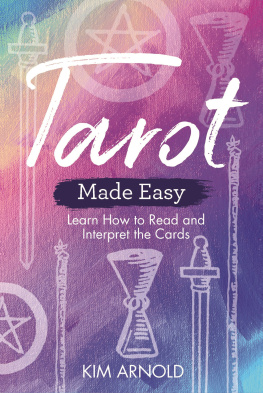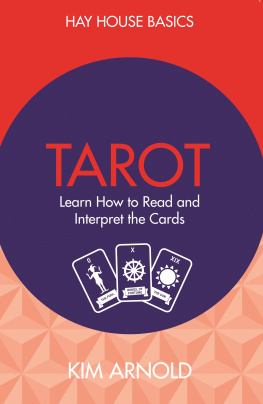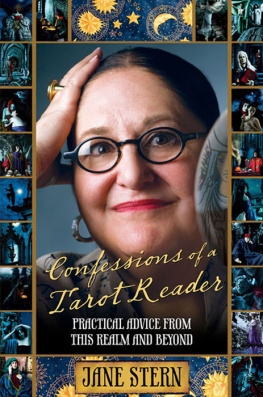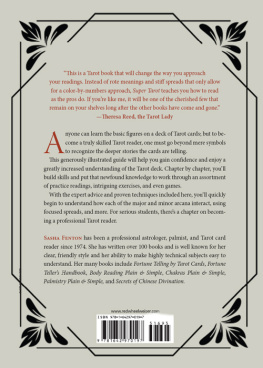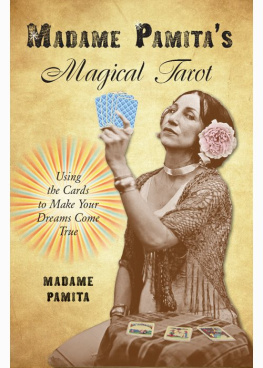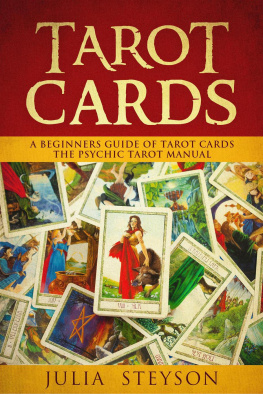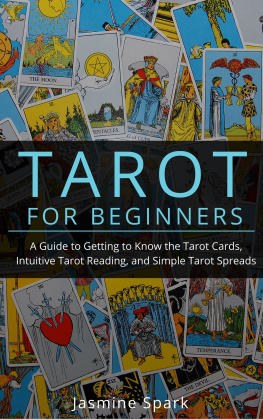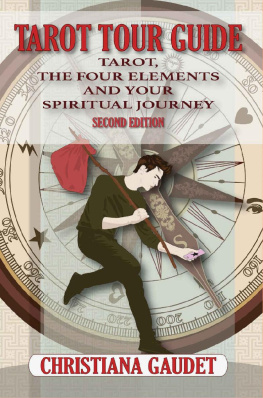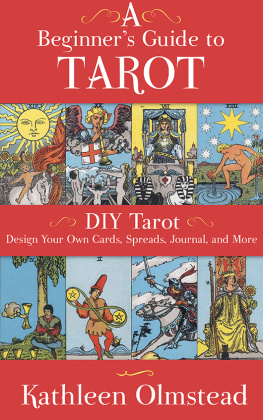Accademia dei Tarocchi, 2014
Graphic design and editing: Accademia dei Tarocchi
Rights of translation, electronic storage, reproduction and total or partial adaptation by any means (including photocopy and microfilm), are reserved for all countries. For usage rights contact the editor.
Editing project: Accademia dei Tarocchi
Direction: Carlo Bozzelli - Accademia dei Tarocchi
To Sara
Index
Introduction
What is the Tarot? It is commonly thought of as a phenomenon so arcane, as to be unable to discover its origin, let alone its authentic meaning. The number of estimations in the thousands of publications on the theme of the Tarot is in itself evidence of a lack of certainty and of definite and convincing answers. This book offers a totally new vision, which, precisely and simply, illustrates the true sense of these extraordinary figures.
The first aspect to clarify is this: the mystery of the Tarot has been intentionally and jealously shielded and concealed over the centuries. It is no surprise that these cards have been called Arcana, from the Latin arcanus , meaning something incomprehensible and hidden. Why this concealment? For what secret reasons? The explanation is only one: the Tarot contains an ancient traditional Knowledge which, in order to not risk alteration, and at the same time to be protected from any accusation of heresy, was conserved in the form of symbolic drawings whose meaning is not readily accessible to all.
To attain this knowledge, we must acquire certain information which, as an encoding key, will throw open the doors of understanding. This is the only reason for which experts, unknowing, have never been able to elaborate conclusive and acceptable hypotheses regarding its true nature. For centuries academicians, esoterists, artists, even simple enthusiasts, have proposed and tenaciously maintained their own personal interpretations. Thus, these cards have become object of theories and opinions of every sort, from the most serious and honest to the most extravagant and imaginative, sometimes being adapted to a multitude of doctrinal systems which have totally transformed them. The Tarot is not at all a simple card game invented for the amusement of a Renaissance duke. At the same time, analyses conducted using only the methods of psychological, philosophical and esoteric matrices cannot be accepted without reserve, as they prove to be partial and incomplete. These figures, in effect, must not be considered exclusively as Archetypes, nor as inspiration for the study of an ancient and universal symbolism. These objectives, which must certainly be developed, are actually accessory to understanding a primary dynamic which lies at the root of the whole. What is this dynamic? What do we mean by this radical declaration?
The Tarot is a group of images composed of features and colors, with the addition of certain names and numbers. For this particularity, it will be well to begin with direct observation. Indeed, would we not do the same, facing a painting? One of the objects of the author is to teach the reader, even the most inexpert, to see these figures with great simplicity and in the most natural way: as would a child. This exercise consists in learning to see in a neutral manner, without committing the error of thinking to see, which would interpose thought and prejudice. Paradoxically, for us who are used to complexity, this is quite a demanding exercise, which necessitates, in case we are already familiar with these figures, the effort to contemplate them as if for the first time.
In order to uncover the teachings they hide, in fact, we must experience personally and visually, systematically, the soundness of each affirmation. No explanation may be accepted dogmatically, no matter the brilliance of the author proposing it, because without an objective and experimentally provable demonstration, in our case visual confirmation, it would risk revealing itself a subjective judgment. The ancient schools of wisdom have bequeathed us the teaching that Truth is a path guided by evidence; when investigating the Tarot, this criterion must be fully respected. In correctly following this approach, anyone will be able to verify a quite surprising aspect: the simple observation of the figures renders manifest the presence of Codes. What do we mean by this?
The Codes of the Tarot are enigmas hiding a solution, like so many puzzles with which many amuse themselves in their free time. These enigmas may be illustrated and explained through logical, rational processes because they may be studied in a repeatable and certifiable manner, which therefore has full scientific validity. Obviously, recognition is preparatory to their resolution; however, the deciphering of a Code, in itself, unveils a fragment of the overall teaching of the Tarot. It is as if we found ourselves before the tiles of an enormous mosaic, which, arranged in their proper places, progressively reveal the global representation of which they are part. We use the adjective enormous because the Codes, of differing degrees of interpretative difficulty, are thousands, all however coherent in their direction and in a shared consciousness. Decoding them, we discover that, despite their great number, they are regulated by well-defined and -delimitated functioning mechanisms. These last, are the Laws which govern the manner in which the Tarot expresses itself and acts. The two elements together, Codes and Laws, create an extremely complex and elaborate Coded Structure , which is the keystone of all results. This Structure , in its maximum perfection, is retraceable to an ancient deck belonging to the group of the Tarot of Marseilles, created by the Master Cardmaker, Nicolas Conver. For this reason, it is used in this treatise, after overseeing the restoration of the features and the improvement of the colours of the original 1760 version. This deck, indeed, is the only reliable source not only for the specific category of the Marseilles Tarot of which it is a part, but for the entire genre, as other contemporary authors are aware, having recycled and used it for the publication of their own well-known decks of Marseilles Tarot. Convers deck is depositary of a Tradition rooted in the origins of Christian history, and must be confronted as a Mute Book of Wisdom: a text that hands down an immense knowledge expressed through images. The Arcana Icons of which it is composed are enigmatic as are hieroglyphs; but thanks to comprehension of the Codes, they become the seventy-eight letters of an alphabet, however unusual. These graphic symbols are regulated by the Grammar, generated and extrapolated thanks to the Codes, that is, the Laws, which we might define a succession of principles necessary to the construction of proper hypotheses. We are face to face with another revolutionary aspect: by means of the Coded Structure , a Language is obtained which allows the Tarot to communicate by clear and direct expression. He who learns it is able to transform a chaotic amalgam of apparently mute and silent illustrations into an ordered message of complete sense, as would an interpreter with a text to translate. Furthermore, the Coded Structure , besides permitting the interpretation of the Tarot as it is commonly understood, sheds light also upon those aspects to which researchers, believing them inaccessible, had renounced. Indeed, unable to provide definite answers, for lack of a solid foundation on which to base them, scholars came to believe that it was impossible to resolve, in an absolute manner, the principle dilemma of these cards: their origin. Thus, they concentrated on the cards presumed use of a divinatory sort - for predicting the future - or else exclusively on their symbolic sense. This last significance, lacking the clear criteria inherent to the Tarot itself, was extracted from comparison with external symbolisms belonging to diverse forms of traditional knowledge, even quite distant from one another for epoch and locality: religions (from Christianity to Hinduism, Buddhism to Shintoism, only to mention a few of the better known), Astrology, the Cabala, Numerology, Alchemy, etc. Therefore, there were attempts to explain the Tarot with key points of other disciplines, resulting in comprehension of inadequate validity.


